Yasmina Reggad is an independent curator based in London who works internationally. I caught up with her to ask her about her role as programme curator of aria (artist residency in algiers).
Was the aria (artist residency in algiers) a long time in the planning? Could you tell me a little about how it was founded, how it is funded and what its mission statement is?
aria was founded by visual artist Zineb Sedira who worked and travels often in Algeria. Since the early 2000s when she reconnected with her parents’ home country, she has regularly met and followed-up on the work of young artists; she has also invited or facilitated the visits of artists, curators and scholars. She has always been an advocate for Algeria, raising awareness of this under-represented country in the contemporary visual landscape through her art work and actively participating in public talks related to arts in the MENA region.
At the end of 2011, she decided to formalise these exchanges in Algiers giving them a more stable and official framework in order to support the development of a growing Algerian art scene. Thanks to the advice of Aaron Cezar from the Delfina Foundation, a partnership with Association Chrysalide, an Algerian non-profit organisation, and a grant from the Arab Fund for Arts and Culture, she was able to plan a one-year pilot programme and define the specificities of this residency programme: a research-oriented residency in Algiers as an invitation to think and initiate new work related to Algeria, developing ‘horizontal’ exchanges with the Maghreb region by systematically inviting an artist from this region, programming guest artists’ talks, workshops and/or tutorials to benefit local audiences of students and artists. She had selected two artists whose work and research were very promising in terms of connecting with the Algerian socio-cultural, historical and political context: Nicene Kossentini (Tunisia; lives and works in Tunis) and Alfredo Jaar (Chile; lives and works in New York)
I first informally joined my friend Zineb at the beginning of January 2012 helping out with the basics in setting up an institution as I had already four years experience with Photo-Festivals. She soon invited me to get involved and we developed the project together. Although I visited Algeria when I was a child, I had never been to Algiers before, so I was also very excited to discover this city and the rest of the country Zineb spoke about so fondly.
Being aware of the challenges of running a residency programme, I was very much impressed and challenged by Zineb, as an artist who wants to create an institution for Algeria while being based in London. Of course, there is a long tradition of artist-run spaces throughout the world, but they are generally located where artists live and work. The case of aria is interesting in the sense that it shows a growing interest and commitment of artists from the Diaspora or of a foreign background, whose roots motivate participatory initiatives, opportunities or art projects to support the development of emerging or struggling art scenes.
Could you tell me a little about the pilot programme of the aria residency in 2012?
aria’s pilot programme was literally a year of evaluation. We had several expectations and it was important to decide whether aria was the appropriate response to questions which still had to be formulated. Throughout the whole year we simply questioned whether a residency was an appropriate response to the lack of visibility of the art community from a country underrepresented in the international art world and whether it helps nurture a local art scene.
For this we initially decided to stay as flexible as possible in order to gather not only information and experience but also to leave some room for organic input from the Algerian community of artists.
We are not the first residency programme in Algeria. The Ministry of Culture’s Villa Abdellatif re-opened its doors in 2009. Although it does sporadically host practitioners from a broad range of disciplines in residence, there is no defined programme and they are just starting to offer and communicate on opportunities for emerging Algerian artists. We are unique in the sense that there are very few private art initiatives in Algeria. Our activities are very inclusive and we intend to have a regular programme and presence throughout the year. We worked a lot on communicating and explaining what a residency was and in being quickly pinpointed on the Algerian art landscape.
Our programme consists of a fixed basic framework: guest artists are in residence dedicating their time to research (or production if they wish) for one to four weeks, according to their practice they give a talk, tutorials or a workshop to students and/or artists. This way, we can focus on the necessary preparation of artists’ visits and research, be more reactive during their stay in Algeria, and map, identify and reach artists and art initiatives in the country. Being quite flexible also allowed us time for unprogrammed residencies and partnerships such as the residency of Gaza-based artist Basel El Maqosui (in association with ArtSchool Palestine). Our founding partner Association Chrysalide plays a great role in our programme thanks to their broad knowledge of the Algerian scene, a contact book second to none and their proximity and daily presence next to our guests. In addition, curator, art critic and professor at the École Nationale des Beaux-Arts d’Alger, Nadira Laggoune is a key element and partner to reach students in the arts and talented artists in the country.
We were actually surprised by the success of aria from its inception: after the publication of our very first newsletter and press release, we started to receive weekly interest from artists throughout the world! It means that very little is known about Algeria, whereas such initiatives facilitating the mobility of artists were long waited. We also quickly attracted the attention of international institutions and curators who often consult us not only regarding Algeria but also the Maghreb region.
Our first artist-in-residence in 2012 was Tunisian artist Nicene Kossentini. She had a loose idea about her research which was meant to evolve around her feeling of belonging to Algeria as her surname echoes the Algerian city of Constantine. She eventually started working in other directions which obviously was not an issue for us. I believe it is always difficult for artists to stick to their first plan when they are discovering, living and working in another country; encounters with people, engaging with a different culture and gaining a better knowledge of a specific context certainly reshape their initial project and influence their practice.
Chilean artist Alfredo Jaar spent one intense week of research in Algiers. It was his first time in the Maghreb region. He has a very specific way of working and his projects can take several years to emerge. So we never expected him to come out with an idea after the first trip but we do hope this first insight was an invitation to come back and/or to initiate a work related to Algeria.
What do you see the local audience in Algiers and the resident artists gaining from the project? How is the residency tailored to the Algerian context?
I like to say that the major success of our pilot year was to sense that Algerian artists felt that they exist in a broader global context and that they were encouraged and supported. I reckon Algerians are a very welcoming community, so by definition the visitor is always celebrated. Not many international artists visit Algeria and local artists don’t have much access to a diverse artistic practice so they are obviously keen to meet their foreign colleagues. I guess artists willing to work or accept our invitation to spend time in Algeria are already de facto committed to engage with local audiences and contribute to our effort. Each artist-in-residence participates in a minimum of one public programme. So far, our artist’s talks are hosted by Nadira Laggoune as part of her seminar in visual arts at the the École Nationale des Beaux-Arts d’Alger which for this occasion is open to all students of the school and the general audience. Alfredo Jaar also gave a workshop to a group of artists about artistic methods. After her talk, Nicene Kossentini received visits at the residency flat from several female students. Algerian artists gain in terms of expanding their space of criticality as they are confronted with new ideas, external questionings and are exposed to a wider range of art forms and processes.
As both Zineb and I have our respective practices of artist and curator, we unfortunately can’t commit to running monthly activities. However, we make the most of the time we spend in Algiers by visiting other practitioners from outside Algiers and constantly speaking to artists. Therefore we are starting to have a vast network and colleagues all over the country. We also try to slowly engage with Algerian institutions which unfortunately have shown little interest in or support for the bottom of the pyramid of artists. So we hope to build bridges and gain access to remarkable exhibition venues in Algiers such as the Villa Abdellatif and the Museum of Modern Art.
So in Algeria we facilitate exchanges and expose artists to diverse practices in order to contribute to their ongoing development. We are also very active outside Algeria. As the opportunities for contemporary international shows in Algeria are rare and there not many opportunities for professional networking, we also support the mobility of artists outside Algeria.
As per our guest artists: what does an artist usually gain in doing a residency abroad? Artworks are the usual agents of encounter between aesthetics and cultures but artists travelling and experiencing life in another country are also agents of new forms of understanding of the world and bringing new input in different contexts. The residency is a healthy place for interaction far from the pressures of the art market. Artists can experiment, question and explore new processes and shifts in their practice (without the rush of having to deliver any physical output in our case). Algeria is not a massive tourist destination and little is known about it except the French period, the Independence and the decade of terrorism in the 90s-early 2000s. I believe that we are offering a singular and a special experience which will certainly be translated into the artists’ working processes and hopefully in their future works. Almost everything is to be discovered and there is so much to engage with which is very exciting and challenging. Algerian artists have a daily social life in which they invite aria’s guests to take part.
I don’t think guest artists expect from aria an opportunity for retreat, isolation and introspection. They are more inclined towards taking risks, looking for more engagement, intensive research and new questionings to challenge their own practice. As Algeria is a small art scene, they can’t expect to build professional networks with curators or institutions, but rather develop a peer network which brings expertise and local knowledge, or simply gives birth to experiences.
How are the artists for aria selected?
Which artists have aria got programmed in for 2013-2014? Have these artists got specific projects they will be working on?
Artists are selected based on their interest in initiating new work in or about Algeria. The relevance oftheir practice to the local community is also a key deciding factor. This ensures that international guest artists can exchange with the local community.
We are advised by artists, gallerists, curators and writers in the Maghreb (including Algeria) and we follow up on the work of young artists and on what’s happening in the region.
We often get to know potential residents beforehand so we are sure of their interest and that they understand our work in Algeria and how they can contribute to the Algerian art scene while developing new projects.
Following on from the success of our pilot programme, we are able this year to expand our programme hosting four artists-in-residence and developing a programme of commissions as well which is supported by the Prince Claus Fund, the French Institute in Algiers and the French Institute in France.
One novelty is that we are opening the residency to an Algerian artist leaving and working outside Algiers. Atef Berredjem from Annaba will undertake a one-month residence with aria in September 2013. In his case, it made more sense to give him the opportunity to produce new work and work alongside a curator. We linked this residency with an invitation by Alya Sebti (Artistic Director of the Marrakech Biennal) within the framework of her ‘Pas de deux’ residency programme at the Villa Romana in Florence. Atef will spend two weeks in Italy with curator Nora Razian who will then also commission a new work he will research and produce when back in Algiers. Algerian artists lack the opportunity to produce new work and to work alongside curators, a profession which is not developed yet in Algeria and the Maghreb. As well as peer discussions and exchanges, we find it important to extend this dialogue with writers and curators.
Our first resident of the year was Paris-based artist Mohamed Bourouissa. The artist was born in Blida (about one hour from Algiers), left for France when he was a child and still often visits Algeria on family trips. I am working with Mohamed on other projects and he mentioned his desire to explore the Psychiatric Hospital of his native city Blida. The hospital was named after Frantz Fanon who practiced there for a few years in the early 50s, developing his revolutionary contributions to psychiatry. Mohamed came twice in June this year, attended a symposium about Frantz Fanon and to start his research at the Hospital in Blida.
In November 2013, Kapwani Kiwanga will spend four weeks in Algiers with aria and she proposes to carry out research which will evolve around the Square of the Emir Abdelkader in the heart of Algiers. Kapwani’s projects based on the conference-performance format are of particular interest to us as it uncommon in the practice of Algerian artists.
We’ll end this year’s programme in April 2014 with a guest from the Maghreb, Younès Rahmoun, from Morocco. Younès is also the founder of Trankat residency programme in his native town of Tétouan. We hope this will encourage further regional artistic and knowledge exchanges between our residency programmes.
Do you think it is productive to set up networks of partnerships between residencies? Is there a feeling of unity across the art community in the region or is each country an isolated case?
On the one hand you have the idea of the network, on the other hand you have partnerships. Individual partnerships are certainly easier to set up as they involve two organisations which define the basis of the collaboration. Whereas to set up a network, you need a common will to get together and a common mission. The idea behind aria’s mission to invite guests from neighbouring countries comes from the lack of ‘horizontal’ exchanges; which means mobility of persons, ideas and artworks within the Maghreb region. However, France is the traditional point of encounter for artists from the region, and lately it also happens in the Arabian Gulf and during international exhibitions or events focusing on the MENA region. We also felt that the Maghreb region has been overlooked and hasn’t directly benefitted from the recent boom and exposure of the art produced in the Arab world. Maybe individually, the Maghrebi contemporary art scenes are too modest and young. So, yes, a network would be welcome in the sense that it would give more visibility to practitioners and initiatives in the region. I am currently applying for funding to conduct research on the potentiality of a network in North Africa (from Egypt to Morocco). My idea is to map the different actors in the contemporary art arena in the region, to evaluate the needs and limits of arts infrastructure, and most importantly to measure the degree of motivation to collaborate between countries, artists, organisations and institutions. In the case of North Africa, a network could play a great role as a catalyst in the circulation of ideas, the mobility of artists, the transfer of knowledge and skills and broader access to funding. The relevance of such networks relies on the desire of the community of artists and the collaboration of spaces of process, training, production, research and diffusion across the region in order to develop mutual support. What we could call a community of culture does exist in North Africa, though within contemporary arts, each country seems to be isolated and struggling to develop its own art scene.
There are several models of networks that promote international exchanges in contemporary art. The oldest network is certainly Triangle network with thirty partners. I am also looking at the Ibero-American residencias_en_red funded in 2008 and which is growing fast and very active in Latin America. I’d like to research experiences or experiments in Eastern Europe as well.
Do you have any predictions for the development of the contemporary art scene in the Maghreb region over the next five years? Is the Marrakech Biennial an important catalyst to the region? Do you think the 1:54 African Art Fair at Somerset House, in which you are participating, will be important for the region?
This could sound very naïve but I was very surprised to see so many young people wanting to become artists in Algeria when the lack on art infrastructure, training and support is so prohibitive, and when the socio-political and economical climate is not clement. It is worth noting that the use of public space is also problematic in these countries. Nevertheless, artists are getting organised and putting on their own collective shows in private apartments or available venues, organising workshops, or simply opening spaces for debate and peer exchange. There should be public policies reflecting the wealth and growing art scenes in the Maghreb. Existing commercial galleries and collectors should also take more risks and support emerging artists. Some already do.
I have never been to the Marrakech Biennial but it is indeed one of the major regular international large-scale exhibitions of contemporary art in the region. Algiers hosts the Festival International d’Art Contemporain (FIAC) at the Musée d’Art Moderne d’Alger (MAMA) with a special intention by its last curator Nadira Laggoune to invite artists from the neighbouring countries. I know that Alya Sebti, the Artistic Director of the Marrakech Biennial is initiating parallel projects evolving around Morocco, Tunisia and Algeria such as the ‘Pas de deux’ residencies at the Villa Romana and the online series of exhibition on ArteEast gallery in which I am participating. I am confident that she will give the same direction to the biennial.
On a more global context, we are really thrilled to have been selected by the newly launched 1:54 Contemporary African Art Fair with a project space (the Algerian artist we are commissioning will soon be announced). This is quite challenging for a non-profit organisation, but is it was very important for both the art fair and us that Algeria was represented by an artist and an organisation operating there. Being supported by the Arts Council for this commission enables us to be very ambitious: in a way this will be the first ‘solo show’ in London of an artist living and working in Algeria. It is also a way for us to expand our network and promote the Algerian art scene to a wide audience, and also to reconnect the Maghreb with the continent it belongs too.
I think it was the right time for a fair dedicated to contemporary African art to emerge (during the most hectic week of Frieze Art Fair), and London the right place to settle. An article recently published on the BBC website predicts that Africa will be the next big thing, reading signs in the sudden interest of great institutions in Europe and the US for African artists. I would obviously prefer African art to be the big thing at home first, but this is the way it works …
I am not able to say whether the fair will contribute significant changes in the Maghreb region as selected artists and galleries will be unveiled in the coming weeks. Yet 1:54 is a platform for African artists (and the Diaspora) to create and show their work to the benefit of a wider audience, and for African commercial galleries to expand their market. I guess, it will also raise awareness and interest from institutions and curators in parts of the world which have been overlooked.
We are very excited to be part of 1:54 and we are confident it will attract a broad audience and that we will all benefit from this platform.
What are your ambitions for the long-term outcomes of aria?
Could you talk about the international residency model and why you find it a valid one?
To be honest, the experience of aria confused me a lot regarding the status of, and what can be achieved with, a residency programme. I guess it depends a lot on the context and the mapping of the arts in each country.
In our case, I am a posteriori convinced that a residency was the right initial framework to first approach the Algerian context. It wasn’t Zineb’s first idea for Algeria. Over the past three years, together with Kader Attia and Nadira Laggoune, she had been planning Arts In Algiers, a large-scale high profile international exhibition project. They had already studied how to navigate the complicated Algerian brainteaser of privately or publicly funded systems and all the possibilities and the limits Algiers’ infrastructures could offer such a project. Somehow, the straightforward structure of the residency was the simplest way to eventually start acting; and I know that aria fulfils her desire to support the Algerian art scene. But this doesn’t mean that aria will stay an institution dedicated solely to organising artist residencies. In a very practical way, the bureaucratic parameter could be a key-factor depending on the context one wants to evolve.
Maybe deciding about the nature of the residency is more critical and will prove or test the relevance of the programme. Process and research focused, commission-based or production-based residencies? aria is a short-term process and research orientated programme for several practical reasons. aria is the first of its kind, so we didn’t provide for the experience of artists staying for longer than a month in Algeria. This country being little known and visited, we were more interested in creating bespoke opportunities as an invitation to initiate new work or to include the outcome of the residency to be included into an ongoing research and/or process. The residency consists in an 80m sq flat located in a privately inhabited building in the centre of Algiers. We don’t have an exhibition space to showcase works produced during the residency. As we are starting to commission work by Algerian artists, we want to develop partnerships with available venues in Algeria. On another note, a busy director and a busy programme coordinator run aria, so we only commit to what we are really humanly able to achieve. Following on his experience in Chile, Alfredo Jaar warned us: exhaustion is the enemy of the early years enthusiasm and energy … Another very significant criteria to be taken into account is the funding: we want to be sustainable and be able to cover the full-cost of what we are planning. Algeria has an art scene that is growing modestly so our activities can still take a human scale.
As I said earlier, with the pilot programme we were able to evaluate the needs of the artists which actually go beyond cross-border exchanges. We are also overwhelmed because so much needs/can be done. Our first ambition is to secure a regular presence and programme in Algiers. We have to be very creative in developing our programme and yet stay within the boundaries of our mission. This said, we strongly believe that there is a gap in education in the visual arts. We are studying different alternative education models in the arts and a cross between the summer school and the workshop format would be the right response for us.
Recently, we’ve heard people in Tunisia encouraged by our success in Algeria and wanting to create a residency programme. Here a network would be relevant in terms of the exchange of skills and sharing of knowledge and experiences.
Do you feel residencies are gaining status and power in the contemporary art world vis-à-vis biennials and art fairs?
I recently participated in one of the Venice Agenda panel discussions during the opening of the biennale and the whole programme was driven by this question. I don’t really understand why we would evaluate residencies in regard to major international exhibitions and fairs. We are speaking about different times in the working life of an artist. I would prefer to relate residencies to studio practice or to the growing interest of museums or institutionally run residencies. Although you can now find residencies in almost every country on the globe, I believe it is still a luxury for artists in terms of time, space and freedom of mind (taking risks, experimenting, community engagement) when they are asked to produce more and faster. There are plenty of artists who produce work during residencies not driven by market-place values and they show the outcomes at major exhibitions and their galleries. So it is clear that residencies have become a vital player in the production of artworks that ‘feed’ biennales and art fairs. I would say that they might sometimes be complementary and other times serve one another in terms of bringing new and site and context specific works to a vast audience.
Of course in the case of aria, we would be very happy if one of our former residents becomes an ‘ambassador’ exhibiting a work developed during his/her residency in an international show. It is actually already the case with Nicene Kossentini presenting a work initiated at aria in The Divine Comedy, a major touring exhibition curated by Simon Njami.
You work on many international curatorial projects simultaneously, what is it that makes London a good base for you to operate from?
I have lived in several countries and after France, London is were I’ve lived the longest. I used to work in publishing and it felt so easy and natural to change career in the UK. I don’t think it would have been possible in any other place I’ve lived in. I found a very creative and supportive environment. I started by setting up Photo-Festivals, a non-profit organisation which is on hold right now. I am dedicating my time to my own projects, writing, curating and to developing aria.
I started working in photography but shifted into the broader realm of images. Somehow I have been lucky to benefit from curatorial development programmes from Tate and International Curators Forum which enabled me to learn a lot alongside very knowledgeable curators working in contemporary art. So I could evolve and develop my practice between and bridging the two worlds (yes, these are really two different worlds which sometimes meet). London is a dynamic art scene, a key-player in the global contemporary art landscape; not to mention that it is a huge airport! It’s a meeting point for many art practitioners from diverse backgrounds and practices. With the recession, there are obviously fewer opportunities and less available funding, and institutions are taking fewer risks. It’s become a very competitive environment. These are challenging times for independent curators as more of our income depends on public funding and we have to diversify our practice … be a nomadic curator and fill in more and more application forms!
However people tend to forget that it is part of a broader artistic context and that there are other exciting opportunities, initiatives, public galleries and artists throughout the UK. For me, London is a base whilst I travel a lot around the UK and abroad.
What are your upcoming projects? Could you tell me about your exhibition The Economy of Hope with Amina Menia and Mohamed Bourourissa at Selma Feriani in Tunis?
I am currently in residence at the Villa Romana until the end of July as part of the programme ‘Pas de deux’. Together with Tunisian artist Ismaël, we have to produce a printable artwork/essay for a collective publication to be launched at the Marrakech Biennial next year. I am also working on the commission for the 1:54 Art Fair in October.
I have been following the work of Mohamed Bourouissa since 2009. I am very much interested in his process and the world of possibilities and ideas generated by his work since Temps mort. I meet often with Amina Menia in Algiers and we have an ongoing dialogue. Both have different practices and interests but I strangely always intuitively felt that there were lines of dialogue between the two artists.
Alya Sebti invited aria as the Algerian component (and Wafa Gabsi for Tunisia) and co-curator of her one-year long online gallery on ArteEast dedicated to Morocco, Tunisia and Algeria. This project will lead to and engage with the theme of the 2013 edition of the Marrakech Biennial: Where are we now.
aria’s first contribution was an essay and an online exhibition showcasing artists from Algeria and/or its Diaspora. I don’t usually work and think in terms of geography. However, at that time I was starting to research the concepts of hope and expectations. I found that Chrysanthemums by Menia and The Utopia of August Sander by Bourouissa were rich fields for discussing and approaching the notion of hope through nostalgia, future, utopia and failure. The works are respectively produced in Algerian and French contexts but the questionings arising from these works are very much universal and very contemporary. I think that the concept of utopia is coming back in the arts, but the concept of hope hasn’t been addressed, as it deserves. The published essay ‘The Economy of Hope [working title]’ is actually an ongoing research and a work in progress essay which I am really enjoying working on a long-term basis. Since June this research is also informed and enriched by attending the ‘Austerity futures? Imagining and materialising the future in an “age of austerity”, a two year programme of events organised by a group of academics.
We are now working with Mohamed and Amina on a show at Selma Feriani Gallery in Tunis for April 2014. It is very exciting as both artists are working on definitive versions of, or reformulating, the selected works, which were in a transitional state.
Biography:
Yasmina Reggad graduated in History from the Sorbonne University. She is an independent curator and writer based in London, and works internationally. Her recent projects include Ce n’est pas du sang, c’est du rouge with Gohar Dashti and Shilpa Gupta (2012) and Mitosis with Jonny Briggs (2012), both for the White Project Gallery, Paris. She is currently working withartists Amina Menia (Algeria) and Mohamed Bourouissa (France/Algeria) ona show The Economy of Hope for Selma Feriani Gallery in Tunis. She is also the Director and Founder of the non-profit organisation, Photo-Festivals, London for which she initiated and presently curates the artist residencies, development and public programmes. Since January 2012, she has been the Programme curator of aria (artist residency in algiers) and worked alongside visual artist Zineb Sedira. She publishes essays and articles on photography and contemporary art, takes part in several juries, and is regularly called upon to participate in panel discussions and talks for organisations and galleries such as the National Photography Symposium, Cornerhouse in the UK, Sharjah Art Foundation March Meeting in the UAE, or Casa Tomada in Brazil.
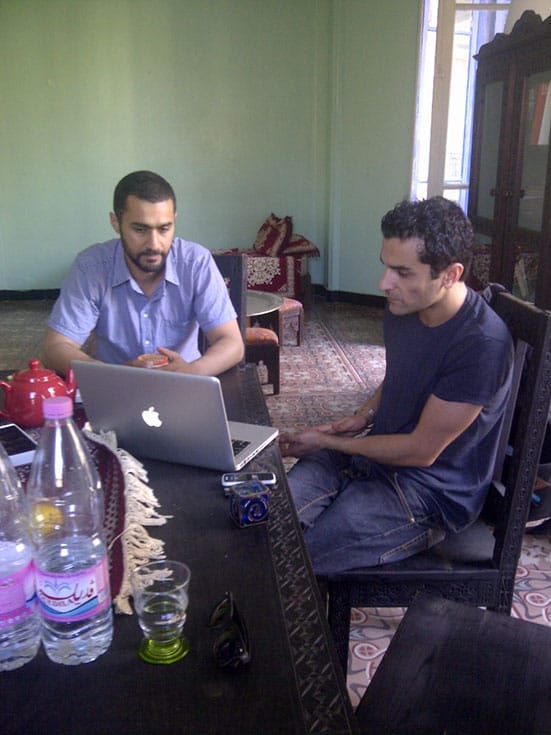
Mohamed Bourouissa tutorial with Sofiane Zouggar, June 2012 © aria

Alfredo Jaar's presentation at Ecole Nationale des Beaux-Arts d'Alger, November 2012 © aria

Alfredo Jaar's workshop with artists Samir Abchiche, Oussama Tabti, Djamel Agagnia, Sofiane Zouggar, Amina Menia and Rafik Laggoune, November 2012 © Samir Abchiche
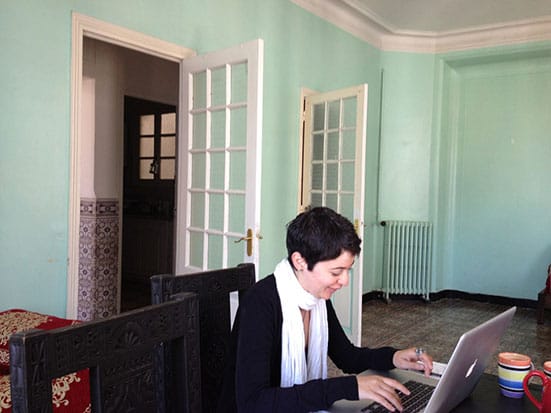
Nicene Kossentini working in the residency flat, May 2012 © aria

Mohamed Bourouissa, Le cercle imaginaire from the series ‘Périphérique', courtesy of kamel mennour gallery
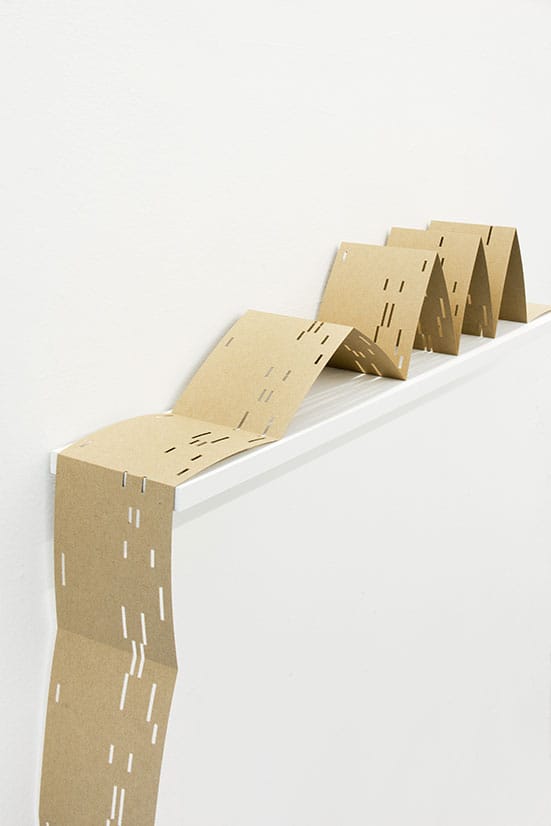
Kapwani Kiwanga, Ifa-Orgue, 2013, photo: Martin Argyroglo
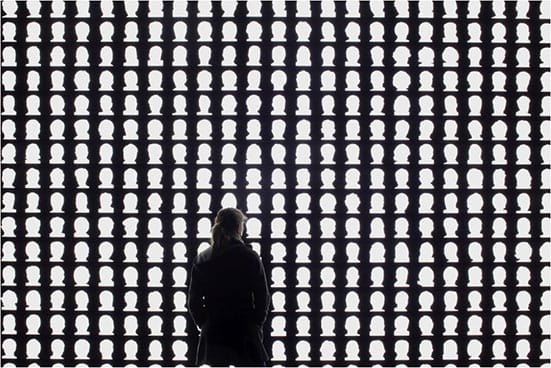
Alfredo Jaar, The Geometry of Conscience, 2010

Younès Rahmoun, Safar ( Voyage ), 2010
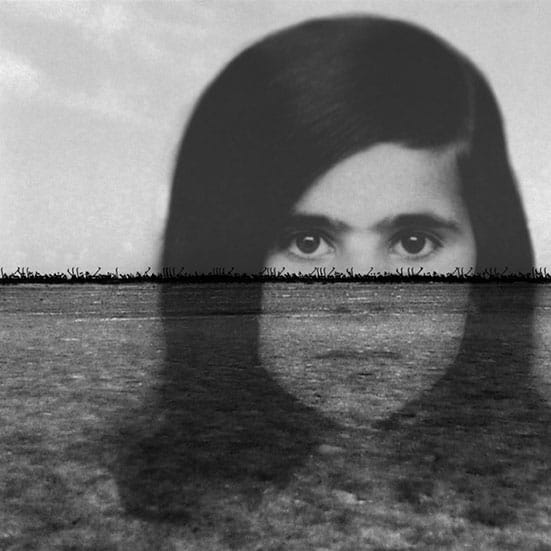
Nicene Kossentini, Boujmal, 2011
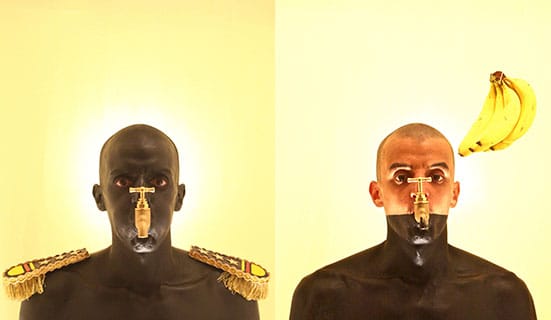
Atef Berredjem, A Relative Theory of Man, 2011